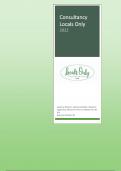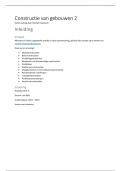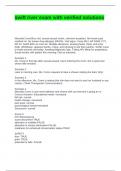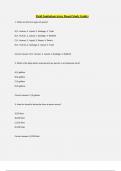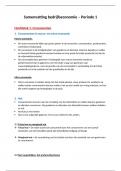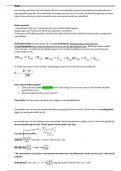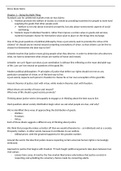🖍
Recombinant DNA
Introduction to Recombinant DNA
What is gene cloning?
A fragment of DNA that includes the
gene to be cloned, is inserted into a
circular DNA molecule called a
vector, to produce a recombinant
DNA molecule. mosquito is a vector
of maleria)
The vector transports the gene into
the host cell, which is usually a
bacterium, although other types of
living cells can be used.
Within the host cell, the vector
multiplies, producing numerous
identical copies, not only of itself but
also of the gene that it carries.
When the host cell divides, copies
of the recombinant DNA molecule
are passed to the progeny and
further vector replication takes
place.
After a large number of cell
divisions, a colony (10 to the 9
individual cells), or clone, of
identical host cells is produced.
Each cell in the clone contains one
or more copies of the recombinant
DNA molecule; the gene carried by
Recombinant DNA 1
, the recombinant molecule is now
said to be cloned.
Why is gene cloning so important?
In this example the DNA fragment
to be cloned is one member of a
mixture of many different fragments,
each carrying a different gene or
part of a gene.
This mixture could indeed be the
entire genetic complement of an
organism—a human, for instance.
Each of these fragments becomes
inserted into a different vector
molecule to produce a family of
DNA inserts in different vectors
recombinant DNA molecules, one of
which carries the gene of interest.
Usually only one recombinant DNA
molecule is transported into any
single host cell, so that although the
final set of clones may contain
many different recombinant DNA
molecules, each individual clone
contains multiple copies of just one
molecule.
This is due to transformation NOT
being very efficient.
The gene is now separated away
from all the other genes in the
original mixture, and its specific
features can be studied in detail.
Cloning allows you to purify
fragments of chromosomal DNA
away from each other.
Gene cloning is a relatively straightforward procedure.
Recombinant DNA 2
, Gene cloning is so important in biology because the technique can provide a
pure sample of an individual gene, seperated from all the other genes in the cell.
In practice, the key to the success
or failure of a gene cloning
experiment is the ability to identify
the particular clone of interest from
the many different clones that are
obtained.
If we consider the genome of the
bacterium Escherichia coli, which
contains just over 4000 different
genes, we might feel that the
chance of us being able to find that
one gene of interest amongst all the
possible clones is as impossible as
us winning the lottery.
The problem becomes even more overwhelming when we remember that
bacteria are relatively simple organisms and that the human genome contains
about five times more genes.
Construction of recombinant DNA molecules
In order to make recombinant DNA molecules, you need to purify the DNA.
There are two types of DNA: Total cell DNA/chromosomal DNA or Pure vector
DNA (plasmid or phage)
Total cell DNA: Pure vector DNA (plasmid or
phage):
will be required as a source of
material from which to obtain Preparation of plasmid DNA
genes to be cloned. from a culture of bacteria
follows the same basic steps as
may be DNA from a culture of
purification of total cell DNA,
bacteria, from a plant, from
with the crucial difference that
animal cells, or from any other
at some stage the plasmid DNA
Recombinant DNA 3
Recombinant DNA
Introduction to Recombinant DNA
What is gene cloning?
A fragment of DNA that includes the
gene to be cloned, is inserted into a
circular DNA molecule called a
vector, to produce a recombinant
DNA molecule. mosquito is a vector
of maleria)
The vector transports the gene into
the host cell, which is usually a
bacterium, although other types of
living cells can be used.
Within the host cell, the vector
multiplies, producing numerous
identical copies, not only of itself but
also of the gene that it carries.
When the host cell divides, copies
of the recombinant DNA molecule
are passed to the progeny and
further vector replication takes
place.
After a large number of cell
divisions, a colony (10 to the 9
individual cells), or clone, of
identical host cells is produced.
Each cell in the clone contains one
or more copies of the recombinant
DNA molecule; the gene carried by
Recombinant DNA 1
, the recombinant molecule is now
said to be cloned.
Why is gene cloning so important?
In this example the DNA fragment
to be cloned is one member of a
mixture of many different fragments,
each carrying a different gene or
part of a gene.
This mixture could indeed be the
entire genetic complement of an
organism—a human, for instance.
Each of these fragments becomes
inserted into a different vector
molecule to produce a family of
DNA inserts in different vectors
recombinant DNA molecules, one of
which carries the gene of interest.
Usually only one recombinant DNA
molecule is transported into any
single host cell, so that although the
final set of clones may contain
many different recombinant DNA
molecules, each individual clone
contains multiple copies of just one
molecule.
This is due to transformation NOT
being very efficient.
The gene is now separated away
from all the other genes in the
original mixture, and its specific
features can be studied in detail.
Cloning allows you to purify
fragments of chromosomal DNA
away from each other.
Gene cloning is a relatively straightforward procedure.
Recombinant DNA 2
, Gene cloning is so important in biology because the technique can provide a
pure sample of an individual gene, seperated from all the other genes in the cell.
In practice, the key to the success
or failure of a gene cloning
experiment is the ability to identify
the particular clone of interest from
the many different clones that are
obtained.
If we consider the genome of the
bacterium Escherichia coli, which
contains just over 4000 different
genes, we might feel that the
chance of us being able to find that
one gene of interest amongst all the
possible clones is as impossible as
us winning the lottery.
The problem becomes even more overwhelming when we remember that
bacteria are relatively simple organisms and that the human genome contains
about five times more genes.
Construction of recombinant DNA molecules
In order to make recombinant DNA molecules, you need to purify the DNA.
There are two types of DNA: Total cell DNA/chromosomal DNA or Pure vector
DNA (plasmid or phage)
Total cell DNA: Pure vector DNA (plasmid or
phage):
will be required as a source of
material from which to obtain Preparation of plasmid DNA
genes to be cloned. from a culture of bacteria
follows the same basic steps as
may be DNA from a culture of
purification of total cell DNA,
bacteria, from a plant, from
with the crucial difference that
animal cells, or from any other
at some stage the plasmid DNA
Recombinant DNA 3

